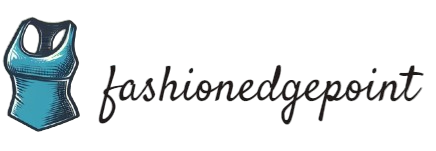From Corsets to Athleisure: Tracing the Evolution of Fashion Trends
In the ever-changing world of fashion, trends have evolved dramatically, reflecting not only changes in style but also shifts in social norms and values. One example of this evolution can be seen in the transition from corsets to athleisure. Historically, corsets were a staple of women’s fashion, emphasizing an hourglass figure and constraining movement. However, as women’s roles in society began to change, so too did fashion trends. The gradual shift towards more practical and comfortable clothing was evident, leading to the eventual rise of athleisure.
Athleisure, a combination of “athletic” and “leisure,” represents a contemporary fashion trend that blurs the lines between activewear and casual wear. This trend signifies a societal shift towards prioritizing comfort and functionality, reflecting the growing emphasis on health and wellness in modern lifestyles. The evolution from the restrictive nature of corsets to the freedom of movement offered by athleisure encapsulates the changing attitudes towards fashion and the human body.
Furthermore, the rise of athleisure reflects the increasing influence of the wellness and fitness industries on fashion. With more people integrating physical activity into their daily routines, the demand for stylish yet practical clothing has grown significantly. As a result, athleisure has become a dominant force in the fashion industry, inspiring clothing lines that seamlessly blend performance and style.
In conclusion, tracing the evolution of fashion trends from corsets to athleisure underscores the dynamic relationship between societal changes and the world of fashion. As we continue to prioritize comfort, functionality, and wellness, it is evident that fashion trends will continue to adapt in response to these shifting values.
The Influence of Social Media on the Ever-Changing Fashion Landscape
Social media has undeniably revolutionized the fashion industry, playing a significant role in shaping and perpetuating the ever-changing landscape of fashion trends. With the rise of platforms like Instagram, TikTok, and Pinterest, fashion trends now have the ability to reach a global audience within seconds. Influencers, celebrities, and even ordinary individuals have become powerful trendsetters, showcasing their personal styles and preferences to millions of followers.
The influence of social media on fashion trends is evident in various aspects. Firstly, it has democratized fashion by giving everyone a platform to express their unique style, challenging traditional norms and paving the way for more diverse and inclusive trends. Moreover, social media has shortened the traditional fashion cycle, as trends emerge and evolve rapidly in response to the latest viral content and social media challenges.
Furthermore, social media has transformed the way consumers discover and engage with fashion. Platforms like Instagram have become virtual shopping destinations, where users can easily purchase the latest trends directly from posts or stories. This seamless integration of e-commerce and social media has significantly impacted consumer behavior, driving impulse purchases and influencing the demand for specific styles and products.
Additionally, social media has also given rise to new trends such as “Instagrammable” fashion, characterized by clothing and accessories designed specifically to be visually appealing and shareable on social platforms. This phenomenon has led to the prioritization of aesthetic appeal and visual impact in the design and marketing of fashion products.
In conclusion, the influence of social media on the evolution of fashion trends is undeniable. From amplifying individual voices to reshaping consumer behavior, social media has become a driving force in the perpetuation and democratization of fashion trends, ultimately shaping the way we perceive and consume fashion in the digital age.

